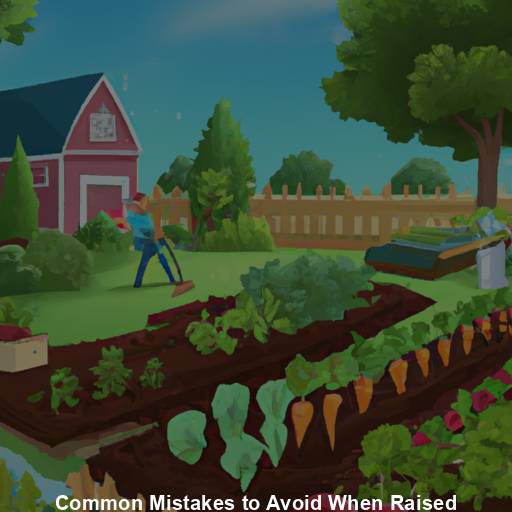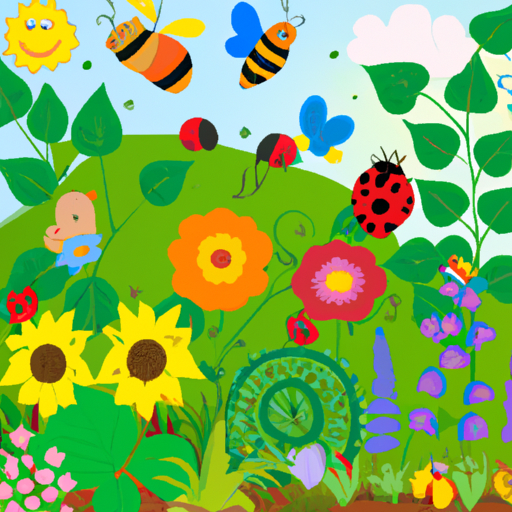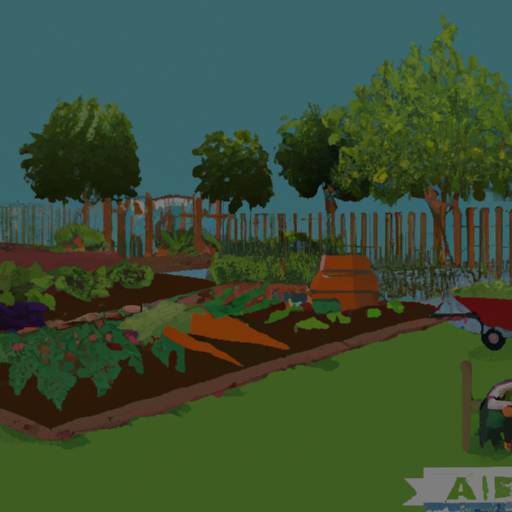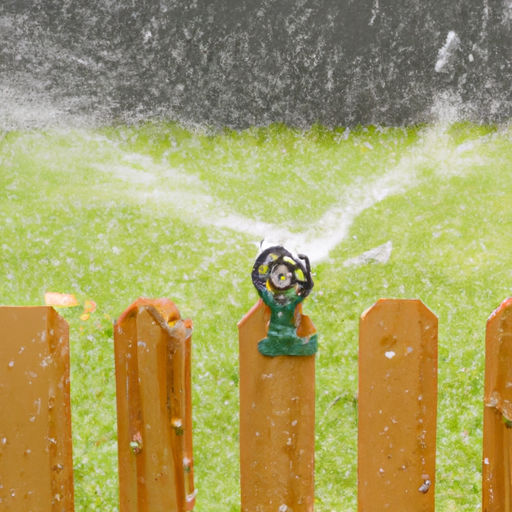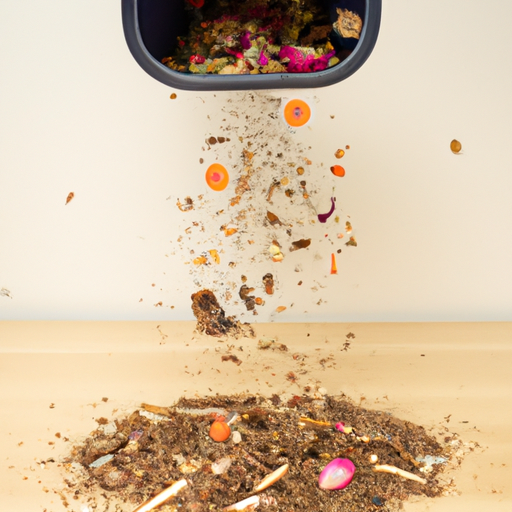As a Master Gardener, I have seen many mistakes made when it comes to raised bed gardening. While this style of gardening has become increasingly popular in recent years, there are still common pitfalls that even experienced gardeners can fall into.
One of the biggest mistakes I see is not properly preparing the soil before planting. Raised beds require different soil than traditional gardens, as they often contain more organic matter and may need additional amendments. Failing to add compost or other nutrients can lead to poor plant growth and disappointing yields.
Additionally, overfilling your raised bed with soil can cause it to settle over time, leaving plants without enough root space. By avoiding these errors and taking the necessary steps for healthy soil, you’ll be on your way to a thriving raised bed garden.
Soil Preparation For Raised Beds
Before you even start planting, it’s essential to prepare your raised bed soil properly.
The first step is choosing the right dimensions for your raised bed. Ideally, the width should be no more than four feet so that you can easily reach into the center of the bed without stepping on the soil or compacting it.
Next, make sure to fill your beds with a high-quality soil mix that will provide adequate drainage and nutrients for your plants.
Composting benefits are immense when incorporated into your soil mix as they add organic matter and improve soil structure.
Remember not to overfill your beds; leave at least two inches between the top of the soil and the edge of the bed to allow water retention during watering.
Taking these steps ensures healthy plant growth in your raised beds while avoiding common mistakes associated with poor soil preparation.
Choosing The Right Soil Mix
Now that you have adequately prepared the soil for your raised beds, it’s time to focus on choosing the right soil mix.
But before we delve into that topic, let me ask you this: are you aware of common mistakes that people make when raised bed gardening?
One mistake is not providing enough composting benefits to their plants. Composting helps improve soil health and provides essential nutrients to plants.
Another mistake is not using the proper fertilizer options. You need a well-balanced blend of nutrients to support plant growth and development.
When selecting a soil mix, consider its texture and nutrient content. A good soil mix should be well-draining while retaining moisture at the same time. It should also contain organic matter such as compost or aged manure which will provide much-needed nutrients to your plants throughout the growing season. If possible, avoid purchasing low-quality soils from big-box stores that don’t meet these standards.
Once you’ve selected your soil mix, incorporate an appropriate amount of fertilizer based on your plant’s needs – too little can lead to poor performance while too much can cause root burn or other issues. Consider using slow-release fertilizers or liquid fertilizers depending on what suits your garden best.
By avoiding common mistakes and selecting high-quality soil mixes with adequate fertilizer options, you’ll set yourself up for success in raised bed gardening.
Remember, it takes patience and dedication but ultimately pays off in bountiful harvests year after year!
Proper Drainage And Watering Techniques
As Master Gardeners, we understand the importance of proper drainage and watering techniques in raised bed gardening. Without adequate drainage, plants can become waterlogged and suffer from root rot. On the other hand, insufficient watering can lead to stunted growth and poor yields.
To ensure your raised beds have proper drainage, it’s crucial to use a well-draining soil mix and avoid overwatering. Additionally, incorporating organic matter such as compost or vermiculite into the soil can improve its structure and aid in drainage.
When it comes to watering your raised beds, using drip irrigation is one of the most efficient methods for delivering water directly to plant roots without wasting excess water through evaporation or runoff. This method also helps prevent fungal diseases by keeping foliage dry. Another beneficial practice is mulching around your plants with materials like straw or wood chips which help retain moisture in the soil while suppressing weeds.
Incorporating these practices will not only promote healthy plant growth but also save you time and effort in maintaining your raised beds throughout the growing season. Remember that each garden bed has unique requirements depending on factors such as sun exposure and temperature fluctuations so it’s essential to monitor their moisture levels regularly.
By following these guidelines, you’ll be on your way to successful raised bed gardening!
Overcrowding Plants In Raised Beds
Now that we have covered the importance of proper drainage and watering techniques, let’s move on to another common mistake in raised bed gardening – overcrowding plants.
While it may be tempting to maximize space by planting more than one type of vegetable or herb in a single raised bed, doing so can lead to stunted growth and poor yields.
Instead, consider companion planting, which involves pairing plants that benefit each other in some way, such as repelling pests or enhancing soil nutrients.
Another option is vertical gardening, where you can grow vining vegetables up trellises or stakes to save space while still allowing for adequate airflow and sunlight.
By avoiding overcrowding and using these alternative planting methods, your raised beds will thrive with healthy and bountiful harvests.
Neglecting Pest And Disease Control
As a Master Gardener, one of the common mistakes that people make when raised bed gardening is neglecting pest and disease control. It’s important to implement an integrated pest management plan in order to prevent damage from insects and other pests. This involves early detection and monitoring for signs of infestations or diseases.
Here are three sub-lists with tips on how to effectively manage pests and diseases:
– Prevention: One effective way to avoid having problems with pests is by practicing good garden hygiene. Keep your garden clean by removing dead plant materials and weeds, which can harbor insect eggs or fungal spores.
– Natural remedies: If you do find yourself dealing with a pest problem, try using natural remedies before resorting to chemical pesticides. For example, spraying plants with neem oil or applying diatomaceous earth around the base of plants can be effective against some types of insects.
– Chemical options: When all else fails, it may be necessary to use chemical pesticides. However, this should always be a last resort as these products can harm beneficial insects as well as pests.
Remember that prevention is key when it comes to managing pests and diseases in your raised bed garden. By implementing an integrated pest management plan and being vigilant about early detection, you’ll be able to keep your plants healthy without relying on harsh chemicals.
Frequently Asked Questions
Can I Use Regular Garden Soil In My Raised Bed?
Using regular garden soil in a raised bed can be tempting, but it’s not always the best option. Soil quality is crucial to growing healthy plants and vegetables, and using alternative soil options can provide better results.
As a Master Gardener, I recommend using high-quality potting mix or compost-based soil for your raised beds. These alternative soils are specifically designed to promote plant growth with the right balance of nutrients and drainage.
Regular garden soil often contains weed seeds, insects, and disease that could harm your crops. Plus, it may contain too much clay or sand which can lead to poor drainage or compacted roots.
By investing in alternative soil options for your raised bed gardening project, you’ll ensure optimal conditions for plant growth and avoid common mistakes along the way.
How Often Should I Water My Raised Bed Garden?
When it comes to raised bed gardening, watering frequency is crucial for the health of your plants.
The amount of water needed will depend on factors such as soil type, weather conditions and plant species.
In general, you should aim to keep the soil moist but not waterlogged.
A good way to check if your plants need watering is by sticking your finger into the soil about 1-2 inches deep; if it feels dry at that depth, then you know it’s time to water.
Remember that overwatering can be just as harmful as underwatering, so strike a balance and monitor your plants closely.
What Is The Best Way To Prevent Pests And Diseases In My Raised Bed?
To prevent pests and diseases in your raised bed, it’s important to implement companion planting and organic pest control methods.
Companion planting involves growing plants that work together to deter pests or attract beneficial insects. For example, planting marigolds alongside tomatoes can help repel harmful nematodes.
Organic pest control includes using natural remedies such as neem oil, garlic spray, or insecticidal soap instead of harsh chemicals.
It’s also important to regularly inspect your plants for signs of disease and remove any affected foliage promptly.
By incorporating these techniques into your gardening routine, you’ll be able to keep your raised bed healthy and thriving without the use of harmful pesticides or chemicals.
Is It Necessary To Use Fertilizer In My Raised Bed Garden?
Just like how flowers bloom with the right amount of water and sunlight, your raised bed garden will thrive with proper fertilization.
Think of it as giving your plants a nutritious meal – without it, they may struggle to grow healthy and strong.
But before you head to the store for synthetic options, consider organic alternatives such as compost or worm castings.
These natural choices are not only better for your plants and soil health, but also reduce the risk of chemical buildup in your garden over time.
As a Master Gardener, I highly recommend incorporating some form of fertilizer into your raised bed routine for optimal growth and yield.
Can I Plant Different Types Of Plants Together In The Same Raised Bed?
Yes, you can definitely plant different types of plants together in the same raised bed using a technique called companion planting.
Companion planting involves pairing plants that benefit each other, such as planting basil with tomatoes to repel pests or planting beans with corn to provide nitrogen for the soil.
Another important technique is crop rotation, which involves rotating crops every year to prevent nutrient depletion and disease buildup in the soil.
By using these techniques, you can have a thriving and diverse garden in your raised beds.
Conclusion
In conclusion, as a Master Gardener, I want to emphasize the importance of avoiding common mistakes when it comes to raised bed gardening.
Remember that using regular garden soil can lead to poor drainage and nutrient deficiencies. Instead, opt for a high-quality soil mix specifically designed for raised beds.
Watering your raised bed garden is crucial but be careful not to overdo it. Consistent watering once or twice a week should suffice, depending on weather conditions.
To prevent pests and diseases from taking over your plants, practice good hygiene by removing any dead leaves or debris regularly.
Lastly, ask yourself: why settle for just one type of plant in your raised bed? By planting different types together, you can create biodiversity which may help with pest control and overall health of your garden.
With these tips in mind, happy gardening!
